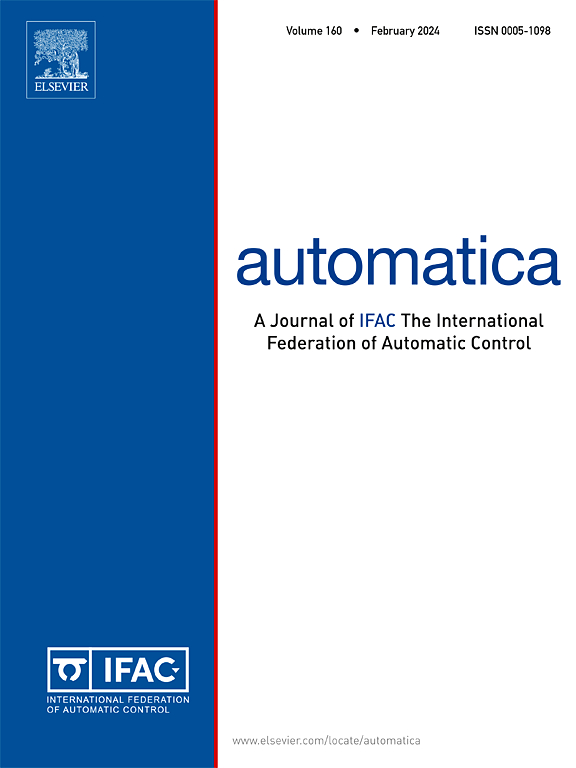弱耦合机电系统的能量控制方法
IF 4.8
2区 计算机科学
Q1 AUTOMATION & CONTROL SYSTEMS
引用次数: 0
摘要
研究了两类弱耦合机电系统的镇定和轨迹跟踪问题。为此,我们在港口-汉密尔顿框架内为这些系统制定了一个基于能量的模型。然后,我们采用李亚普诺夫理论和收缩系统的概念来开发在port- hamilton框架中的控制方法。值得注意的是,这些控制方法不需要求解偏微分方程或实现任何坐标变化,并且具有物理解释。研究了耦合阻尼对闭环系统暂态性能和收敛速度的影响。最后,通过仿真说明了所提方法在两种机电系统应用中的适用性。本文章由计算机程序翻译,如有差异,请以英文原文为准。
Energy-based control approaches for weakly coupled electromechanical systems
This paper addresses the stabilization and trajectory-tracking problems for two classes of weakly coupled electromechanical systems. To this end, we formulate an energy-based model for these systems within the port-Hamiltonian framework. Then, we employ Lyapunov theory and the notion of contractive systems to develop control approaches in the port-Hamiltonian framework. Remarkably, these control methods eliminate the need to solve partial differential equations or implement any change of coordinates and are endowed with a physical interpretation. We also investigate the effect of coupled damping on the transient performance and convergence rate of the closed-loop system. Finally, the applicability of the proposed approaches is illustrated in two applications of electromechanical systems through simulations.
求助全文
通过发布文献求助,成功后即可免费获取论文全文。
去求助
来源期刊

Automatica
工程技术-工程:电子与电气
CiteScore
10.70
自引率
7.80%
发文量
617
审稿时长
5 months
期刊介绍:
Automatica is a leading archival publication in the field of systems and control. The field encompasses today a broad set of areas and topics, and is thriving not only within itself but also in terms of its impact on other fields, such as communications, computers, biology, energy and economics. Since its inception in 1963, Automatica has kept abreast with the evolution of the field over the years, and has emerged as a leading publication driving the trends in the field.
After being founded in 1963, Automatica became a journal of the International Federation of Automatic Control (IFAC) in 1969. It features a characteristic blend of theoretical and applied papers of archival, lasting value, reporting cutting edge research results by authors across the globe. It features articles in distinct categories, including regular, brief and survey papers, technical communiqués, correspondence items, as well as reviews on published books of interest to the readership. It occasionally publishes special issues on emerging new topics or established mature topics of interest to a broad audience.
Automatica solicits original high-quality contributions in all the categories listed above, and in all areas of systems and control interpreted in a broad sense and evolving constantly. They may be submitted directly to a subject editor or to the Editor-in-Chief if not sure about the subject area. Editorial procedures in place assure careful, fair, and prompt handling of all submitted articles. Accepted papers appear in the journal in the shortest time feasible given production time constraints.
 求助内容:
求助内容: 应助结果提醒方式:
应助结果提醒方式:


